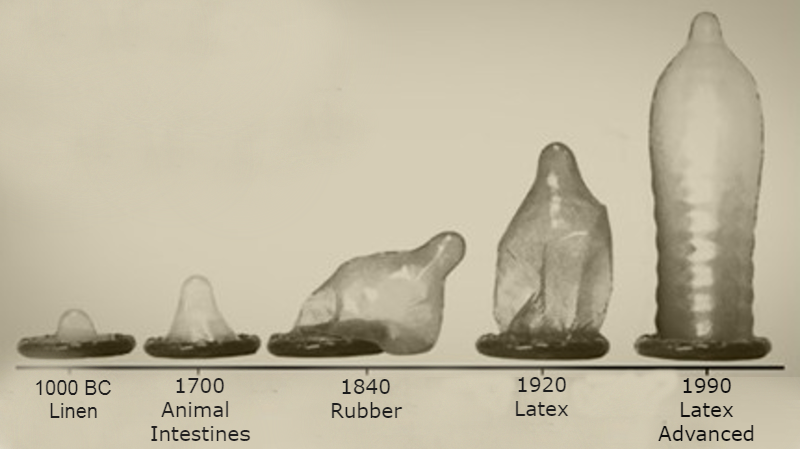Throughout history, the popularity of condoms has waxed and waned, closely tied to each era's prevailing political and cultural attitudes. Advancements in our understanding of disease and infection and developments in materials and construction techniques have played pivotal roles in shaping the design and adoption of condoms.

Condoms in Ancient Times: A Patchwork of Protection
In ancient times, various forms of condom-like devices were employed by different civilizations. King Minos of Crete, an early trailblazer, reputedly used a goat's bladder sheath around 3,000 B.C. to safeguard his wife from his semen, which was believed to contain harmful "serpents and scorpions."
Meanwhile, in Asia, limited evidence suggests the early use of glans condoms that covered only the head of the penis before the 15th century in China and Japan. Chinese glans condoms were possibly crafted from oiled silk paper or lamb intestine, while in Japan, they were made from tortoise shells or animal horns—materials that were far from comfortable.
The Egyptians brought some improvements, employing linen sheaths dyed in different colors to protect and distinguish between different social classes. Additionally, these linen sheaths were used to guard against bilharzia, a parasitic infection prevalent in their region.
An Era of Increasing Popularity. The 18th century marked a turning point in condom awareness. Despite facing considerable opposition, including petitions to outlaw condom use by the U.K. Parliament, the condom market experienced steady and rapid growth. Condoms were even sold in European pubs, theaters, and barbershops.
However, until the 19th century, condom usage remained mostly confined to the upper classes due to a lack of sexual education among the working classes.

The AIDS Epidemic and the Rise of Condom Usage
The discovery that AIDS was a sexually transmitted disease and that barrier methods provided the only reliable protection against it triggered an unprecedented surge in condom usage worldwide. This realization led to a significant increase in the adoption of condoms as a preventive measure.
The Advent of Latex
During the American Industrial Revolution, rubber manufacturing gained momentum, and in 1839, Charles Goodyear invented rubber vulcanization. The first rubber condoms were produced in 1855, and by the 1860s, they were mass-produced. However, skin condoms remained more popular due to their lower cost and the tendency of early rubber condoms to slip off. The introduction of latex in the 1920s revolutionized condom production. Latex, created through a process involving rubber suspended in water, made condoms cheaper and easier to manufacture. As a result, latex condoms gradually replaced skin condoms in popularity.
Condom Use in Wars and Beyond
During World War I, the United States and Britain were the only European countries that did not provide condoms to their soldiers. Consequently, the documented cases of syphilis and gonorrhea among American troops skyrocketed. Learning from this oversight, the U.S. military rectified the situation in World War II by distributing condoms to soldiers.
Shortly after, Britain caught up by introducing the first lubricated condom in 1957, produced by Durex. This breakthrough fueled a surge in condom usage, with 42% of sexually active individuals relying on condoms for birth control between 1955 and 1965.
The Decline and Resurgence
With the widespread use of penicillin and the advent of the contraceptive pill, condom usage experienced a significant decline until the 1980s, when the AIDS epidemic emerged. The realization that AIDS could be prevented through barrier methods resulted in a tremendous increase in condom usage worldwide.
Yet, as the new millennium arrived, complacency began to take hold, leading to a resurgence of other sexually transmitted infections (STIs). One concern among health professionals is the rapid increase of chlamydia, with its prevalence doubling in the past decade and an estimated 25% of women contracting it by age 25.
Innovations on the Horizon
From silk paper's humble origins to latex advancements, the future of condoms holds exciting possibilities. Scientists in Wollongong are on the cusp of a breakthrough that promises an invisible, imperceptible condom that mimics real skin. While these innovations are still in development, the potential for a revolution in condom design and usability looms on the horizon. Only time will reveal what lies ahead in the world of condom technology.